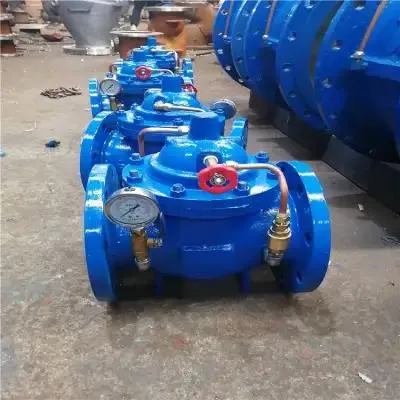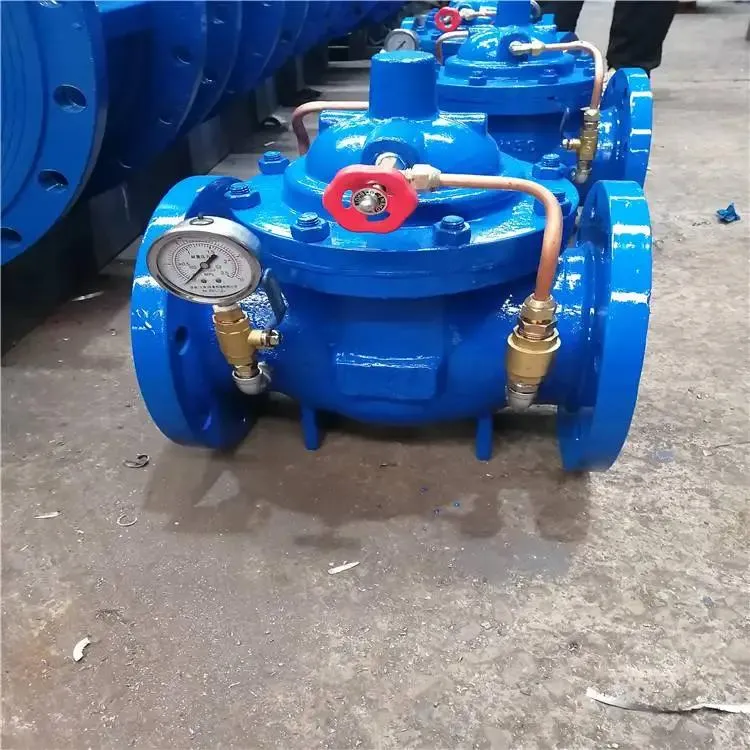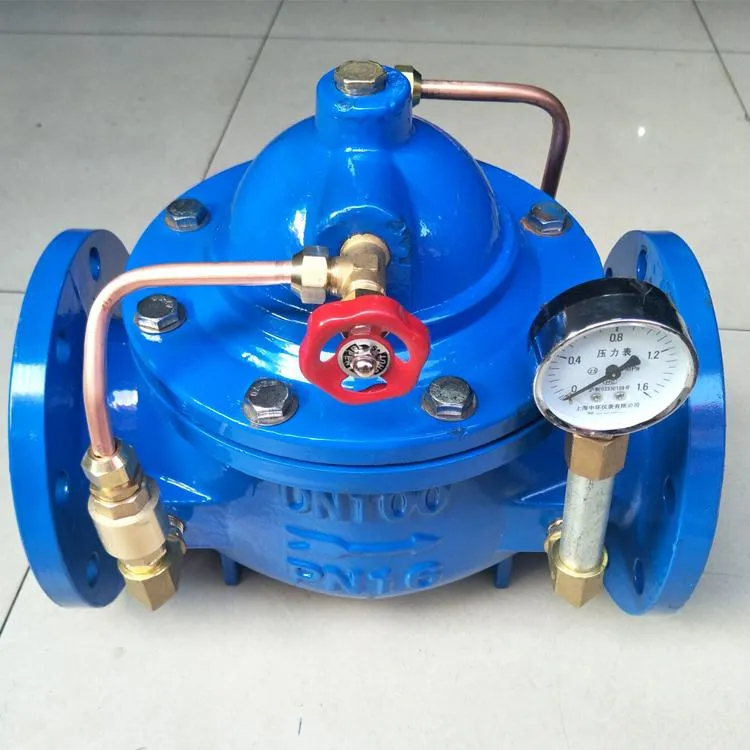Jun . 09, 2025 10:00 Тизмеге кайтуу
Key Features of Slow Closing Check Valve
In the complex world of fluid handling systems, check valves serve as essential guardians, ensuring that fluid flows in a single direction and preventing backflow that could lead to system failures, equipment damage, or safety hazards. Among the various types of check valves, the slow closing check valve stands out with its unique set of features designed to address specific challenges in fluid dynamics. Meanwhile, 1 1 2 check valve and 1 1 4 check valve, with their specific size specifications, offer tailored solutions for different pipeline diameters and flow requirements.

Slow Closure and Sealing Features of Slow Closing Check Valve
The slow closing check valve is defined by its gradual closure mechanism, a feature that significantly reduces water hammer. When reverse flow occurs, internal damping components initiate a controlled, slow - closing process, allowing fluid to decelerate gently and preventing shockwaves that damage pipelines. The slow - closing action also enables a precise and gentle seating of the valve disc, creating an exceptional seal. High - quality, corrosion - and wear - resistant sealing materials further enhance its leak - prevention capabilities across various fluids, making it a reliable choice for critical applications in chemical processing and water treatment.
Size - Specific Utilities of 1 1 2 and 1 1 4 Check Valve
1 1 2 check valve and 1 1 4 check valve offer size - specific advantages. The compact 1 1 2 check valve is ideal for smaller - scale applications and branch pipelines, providing reliable backflow prevention in space - constrained environments. In contrast, the 1 1 4 check valve, designed for larger - diameter main pipelines, can handle higher volumes of fluid, ensuring unidirectional flow in industrial settings with substantial fluid movement. Both sizes are available as slow - closing variants, extending the benefits of gradual closure to systems of different scales.

Material and Construction for Durability
The durability of slow closing check valves, including 1 1 2 check valve and 1 1 4 check valve variants, is ensured by robust materials and construction. These valves are typically made from high - strength materials such as stainless steel, ductile iron, or brass, selected based on application needs. Stainless steel provides excellent corrosion resistance, while ductile iron offers high strength and toughness. Internally, components like the valve disc and seat are crafted from materials with low friction and high wear resistance, guaranteeing smooth, long - term operation even in demanding industrial scenarios.
Operational Flexibility of Slow Closing Check Valve
Slow closing check valves, encompassing 1 1 2 check valve and 1 1 4 check valve variants, exhibit remarkable operational flexibility. They can be integrated into diverse fluid handling systems, from basic water supply networks to complex industrial pipelines, and adapt to various fluid types, flow rates, and pressure conditions. Some models feature adjustable closing times, allowing operators to fine - tune performance according to system requirements. Whether in small - scale or large - scale applications, their adaptability ensures reliable backflow prevention while minimizing impact on overall system dynamics.

Slow Closing Check Valve FAQs
How does the slow closure of a slow closing check valve protect pipelines?
The slow closure mechanism of the slow closing check valve protects pipelines by mitigating water hammer. When traditional check valves close abruptly, the sudden stop of fluid flow generates shockwaves that can damage pipes and fittings. In contrast, the slow closing check valve's internal damping components initiate a gradual closing process when reverse flow occurs. This allows the fluid to decelerate gently, reducing the intensity of shockwaves and preventing pressure surges that could cause physical damage to the pipeline system. By minimizing water hammer, the valve extends the lifespan of pipes, fittings, and connected equipment, ensuring the stability and reliability of the fluid handling system.
In which situations are 1 1 2 check valve and 1 1 4 check valve preferred?
The 1 1 2 check valve is preferred in situations where space is limited and smaller - scale fluid handling is required, such as in residential plumbing systems or branch pipelines of larger setups. Its compact size enables easy installation in tight spaces while still providing reliable backflow prevention. The 1 1 4 check valve, on the other hand, is suitable for applications that involve higher - volume fluid flow, typically found in large - diameter main pipelines of industrial settings like refineries or power plants. Its larger size allows it to handle greater volumes of fluid with ease, ensuring unidirectional flow and preventing backflow under high - pressure and high - flow conditions. When available as slow - closing variants, both valves also offer the added benefit of reducing water hammer effects in their respective applications.
How do materials contribute to the durability of slow closing check valves?
Materials play a crucial role in the durability of slow closing check valves, including 1 1 2 check valve and 1 1 4 check valve variants. High - strength materials like stainless steel offer excellent corrosion resistance, protecting the valve from degradation when exposed to corrosive fluids or humid environments. This ensures the valve maintains its structural integrity over time. Ductile iron, with its high strength and toughness, enables the valve to withstand high pressures and heavy mechanical loads without deforming or breaking, making it suitable for demanding industrial applications. Internally, materials with low friction and high wear resistance for components such as the valve disc and seat ensure smooth operation and reduce wear, allowing the valve to perform reliably in various applications and minimizing the need for frequent replacements and maintenance.
What makes slow closing check valves operationally flexible?
Slow closing check valves, including 1 1 2 check valve and 1 1 4 check valve variants, are operationally flexible due to several factors. They can be used in a wide range of fluid handling systems, accommodating different types of fluids, flow rates, and pressure conditions. Some models come with adjustable closing times, which allows operators to customize the valve's performance based on the specific requirements of the system, such as optimizing backflow prevention during fluctuating flow rates. Additionally, their ability to fit into systems of various sizes, from small residential setups to large industrial complexes, makes them adaptable to different infrastructure needs. This combination of features ensures that slow closing check valves can provide reliable backflow prevention while adapting to the unique characteristics of diverse fluid handling applications.
How do slow closing 1 1 2 check valve and 1 1 4 check valve enhance system efficiency?
The slow closing feature of 1 1 2 check valve and 1 1 4 check valve enhances system efficiency in multiple ways. Firstly, by reducing water hammer, these valves prevent damage to pipes and other components, minimizing the need for repairs and replacements that could cause system downtime. For instance, in a water distribution network with a 1 1 4 check valve, the slow closing action ensures that sudden pressure surges don't rupture pipes, keeping the water supply uninterrupted. Secondly, their reliable sealing capabilities prevent fluid leakage, which means no loss of valuable resources or energy. In industrial applications where a 1 1 2 check valve is used in a smaller - scale fluid line, the tight seal stops any fluid from seeping out, maintaining the system's operational integrity. Moreover, the ability of these valves to adapt to different flow rates and pressure conditions, thanks to their design and construction, allows the fluid handling system to operate at an optimal level, regardless of the varying demands placed on it. Whether it's handling peak loads or normal operations, slow closing 1 1 2 check valve and 1 1 4 check valve contribute to the overall efficiency and reliability of the system.
-
Heavy Duty Knife Gate Valve PerformanceЖаңылыктарJul.25,2025
-
Choosing Between Gate and Globe Gate Valves for Optimal PerformanceЖаңылыктарJul.25,2025
-
Cast Iron Y Strainer DurabilityЖаңылыктарJul.25,2025
-
Ball Style Check Valve MaintenanceЖаңылыктарJul.25,2025
-
Types of Strainer in Piping SystemsЖаңылыктарJul.25,2025
-
The Role of Master Ring Gage in Quality Control SystemsЖаңылыктарJul.25,2025
Тектеш ПРОДУКЦИЯЛАР









